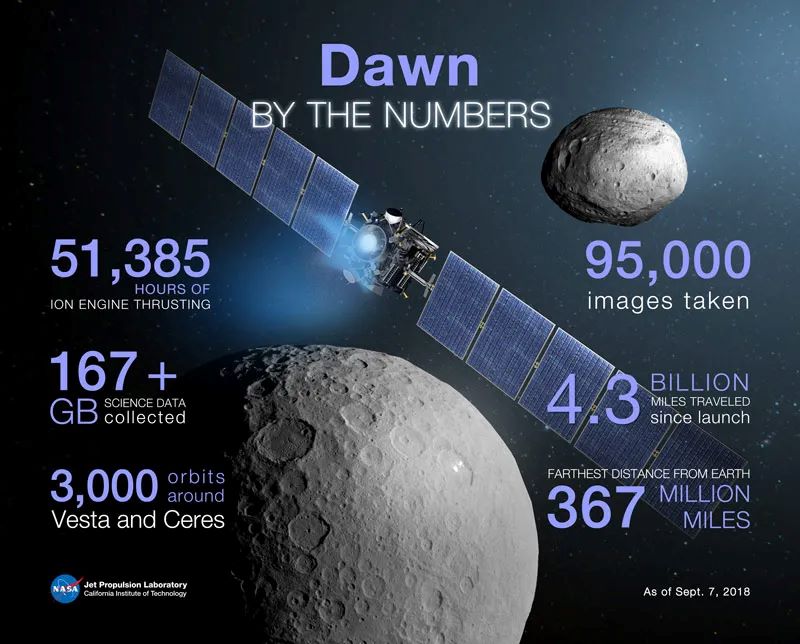Where did complex organics on Ceres come from?
When the Dawn mission revealed the presence of complex organics on Ceres, a dwarf planet in the asteroid belt between Mars and Jupiter, NASA scientists exploded into joy.
Dawn found Ceres's surface to be a mixture of water ice and hydrated minerals such as carbonates and clay while gravity data suggest it is partially differentiated into a muddy (ice-rock) mantle/core and a less dense but stronger crust that is at most 30% ice by volume. Although Ceres likely lacks an internal ocean of liquid water, brines still flow through the outer mantle and reach the surface, allowing cryovolcanoes to form roughly every fifty million years. This makes Ceres the closest known cryovolcanically active body to the Sun, and its brines provide a potential habitat for microbial life.
More to read:
Exoplanet K2-18b may harbor life
Along with Pluto, which is suspected of having some form of biology, Ceres would be the third planet in the Solar System to harbor life. What intrigued NASA and other space agencies around the world is whether those aliphatic molecules, which consist of carbon and hydrogen chains, were born on Ceres or “immigrated” from somewhere.
Some astronomers thought the chemicals had been brought from a comet hitting Ceres.
Others believed they formed there when water mixed with the planet's materials. But either way, Ceres has been hit by a lot of space rocks, which affects the chemicals.
More to read:
Saturn moon squirted an enormous water vapor into space
The origin of those organics remained a mystery until last October, when the Geological Society of America hosted a meeting to see the findings of a study on this topic.
The new research shows that those chemicals might be spread out more than assumed and can survive being hit by space rocks. NASA scientists conducted experiments to see how space rocks hitting the dwarf planet might affect these organics, using data from the Dawn spacecraft to clear the matter.

The experiments mimicked the impact conditions typical of Ceres, with impact speeds ranging 2–6 km/s and impact angles varying between 15 and 90 degrees relative to horizontal. The researchers then conducted a new analysis that combined data from two different instruments — the camera and the imaging spectrometer on the Dawn spacecraft — and then used an algorithm to extrapolate the compositional information from the spectrometer down to the camera’s higher spatial resolution.
The results allowed them to investigate the organics at finer detail than has previously been possible. Their findings show that there are plenty of such molecules deep inside the planet and they might have formed on Ceres after all.
Truth being said, there’s no direct evidence to support the conclusion, which is still a guess based on theoretical deduction and calculations. Therefore, several future missions will head to the asteroid belt in order to grab new samples and compare with what we know about Ceres.
One of these is Lucy, which was launched in 2021 and made its first asteroid flyby in November 2023. Lucy is the first space mission to explore a diverse population of small bodies known as the Jupiter Trojan asteroids.
Ceres was discovered in 1801 by Giuseppe Piazzi, an Italian Catholic priest, mathematician, and astronomer.
***
NewsCafe relies in its reporting on research papers that need to be cracked down to average understanding. Some even need to be paid for. Help us pay for science reports to get more interesting stories. Use PayPal: office[at]rudeana.com or paypal.me/newscafeeu.







